#Eastern Nigeria
Explore tagged Tumblr posts
Text
Is Norwegian trace DNA common for people who are ethnically British?
#I’m 90% ethnically British and then a random 3% Norwegian#the rest is random trace DNA from Eastern Europe and Nigeria#but I have Norwegian DNA on both sides of my family despite having no known Norwegian ancestors
22 notes
·
View notes
Text
youtube
#producer#hiphop#music#love#nigeria#rap#beat#oomcmoo#youtube#rapper#poland#europe#eastern europe#germany#polska#romania#new york#nyc#new york city#manhattan#brooklyn#prodigy#50 cent#kendrick lamar#lil wayne#hip hop#worlds beyond number#random#nonsense#random shit
2 notes
·
View notes
Text
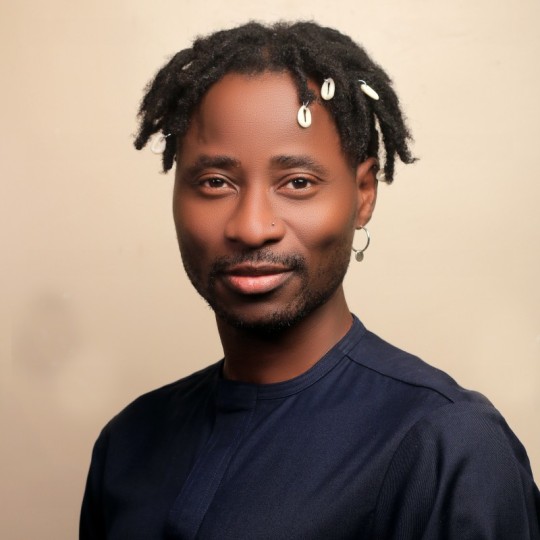
The Power of Our Words:
Reflecting on Identity and Acceptance with Bisi Alimi
Language shapes our identities and perceptions, acting as a mirror to society's values and biases. It can empower, but also marginalize. Today, I'm drawn into reflection by a friend's self-description as "sapphic," a term that echoes the complexity of identity and the nuances of language's power.
This reflection led me to explore the terms we use to describe our identities, like "achillean" for male or gay identities, particularly within African cultures. My journey brought me to the story of Bisi Alimi, a figure of courage and a beacon for change. Alimi bravely became the first Nigerian gay man to come out on national television. Facing threats for his openness, Alimi's story is a testament to the struggle for acceptance and the right to be oneself.
Bisi Alimi's activism goes beyond personal courage; it challenges us to confront the power dynamics in society and the role language plays in these battles. His life reminds us that change often comes from those who refuse to silence their truths, echoing Martin Luther King's words that "a riot is the language of the unheard." Around the world, LGBT protests and movements against unjust policies highlight the ongoing fight for rights and recognition.
Yet, our use of language in discussing these issues often falls short. "Tolerance" implies a begrudging acceptance, hiding behind phrases like "I love you but not your lifestyle" or "How's your little friend?" It's a language that distances, that refuses to see the full humanity of others.
In contrast, justice speaks a different language. It says, "My fiancé is doing well, and I hope one day you get to meet my husband." It challenges prejudice with the simple but revolutionary act of living openly and lovingly. It says to those unwilling to see, "Then poke your own eyes out and be blind."
As we reflect on the power of our words, we must ask ourselves: Are we contributing to a world of tolerance, or are we paving the way for true justice? Our language can build bridges or walls. Let's choose our words with the intention to understand, to accept, and to love.
In honoring figures like Bisi Alimi, let's commit to using our language as a tool for change. Let this be a call to action, to use our words to fight for a world where love is celebrated in all its forms, and where every identity is recognized and respected. How will you use your words?
By examining our language and its impact, we can contribute to a more just and inclusive society. Let's be inspired by activists like Alimi and join in the broader movements for social justice, understanding that our fight against inequity is interconnected and global. In the end, the power of our words lies in their ability to connect us, to challenge us, and to change the world.
#nigeria#politics#lgbt#activism#language#achillean#sapphic#lesbian#gay#africa#africanlgbt#human rights#global rights#Westernized failures#Eastern traditional negligence
4 notes
·
View notes
Text
Pop ceiling design for one bedroom apartment to let very cute beautiful home with a friendly budget modern 1bhk house near by at Rumuosi new layout in port Harcourt city rovers state Nigeria.
#rivers state#lagos#vietnam#abuja#bangladesh#nysc#nigeria#wike#youtube#portharcourt#russia#geopolitics#russo ukrainian war#eastern europe#ukraine#war
1 note
·
View note
Text
Simon Ekpa Arrest: Finland-based Nigerians Panic
Simon Ekpa arrest: Finland-based Nigerians panic as search for collaborators intensifies In recent days, reports of Simon Ekpa’s arrest has brought great relief to Nigeria Government, which in months, has been militated by the havoc caused in Southeast Nigeria. Ekpa’s arrest came following diplomatic pressure instigated by Nigeria Government on the Finnish counterparts. Following his arrest, many…
#Dplomatic Ties#Eastern SEcurity Network#ESN#Finland#Finnish Ambassador#IPOB#Nigeria#Nigeria&039;s 2023 General Election#Nigerian Foreign Ministry#Simon Ekpa#The Indegenous People Of Biafra
0 notes
Text
The War in the middle East take's a new turn as Beirut was left sleepless last night by Israeli bombardment
Beirut didn’t sleep last It started with Israel sinking the Hezbollah HQ The decapitation strike was ordered by the Israeli cabinet on Monday after two earlier refusals As twilight yesterday Isreali jets dumped bunker busting missiles into the high rise with a fortified bunker Hassan Nasrallah the leader of the Hezbollah was in the building The Israeli defence force believe he is probably…
0 notes
Text
Here's the top 2 stories from each of Fix The News's six categories:
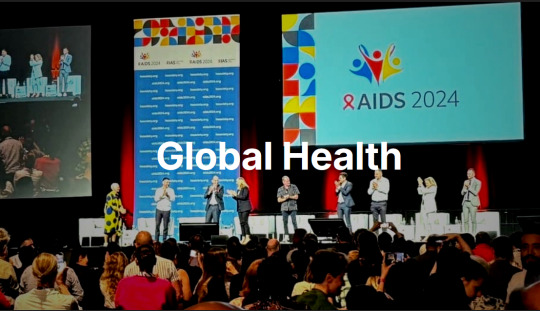
1. A game-changing HIV drug was the biggest story of 2024
In what Science called the 'breakthrough of the year', researchers revealed in June that a twice-yearly drug called lenacapavir reduced HIV infections in a trial in Africa to zero—an astonishing 100% efficacy, and the closest thing to a vaccine in four decades of research. Things moved quick; by October, the maker of the drug, Gilead, had agreed to produce an affordable version for 120 resource-limited countries, and by December trials were underway for a version that could prevent infection with just a single shot per year. 'I got cold shivers. After all our years of sadness, particularly over vaccines, this truly is surreal.'
2. Another incredible year for disease elimination
Jordan became the first country to eliminate leprosy, Chad eliminated sleeping sickness, Guinea eliminated maternal and neonatal tetanus, Belize, Jamaica, and Saint Vincent & the Grenadines eliminated mother-to-child transmission of HIV and syphilis, India achieved the WHO target for eliminating black fever, India, Viet Nam and Pakistan eliminated trachoma, the world’s leading infectious cause of blindness, and Brazil and Timor Leste eliminated elephantiasis.
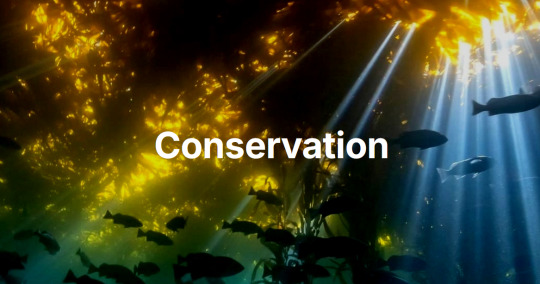
15. The EU passed a landmark nature restoration law
When countries pass environmental legislation, it’s big news; when an entire continent mandates the protection of nature, it signals a profound shift. Under the new law, which passed on a knife-edge vote in June 2024, all 27 member states are legally required to restore at least 20% of land and sea by 2030, and degraded ecosystems by 2050. This is one of the world’s most ambitious pieces of legislation and it didn’t come easy; but the payoff will be huge - from tackling biodiversity loss and climate change to enhancing food security.
16. Deforestation in the Amazon halved in two years
Brazil’s space agency, INPE, confirmed a second consecutive year of declining deforestation in the Brazilian Amazon. That means deforestation rates have roughly halved under Lula, and are now approaching all time lows. In Colombia, deforestation dropped by 36%, hitting a 23-year low. Bolivia created four new protected areas, a huge new new state park was created in Pará to protect some of the oldest and tallest tree species in the tropical Americas and a new study revealed that more of the Amazon is protected than we originally thought, with 62.4% of the rainforest now under some form of conservation management.
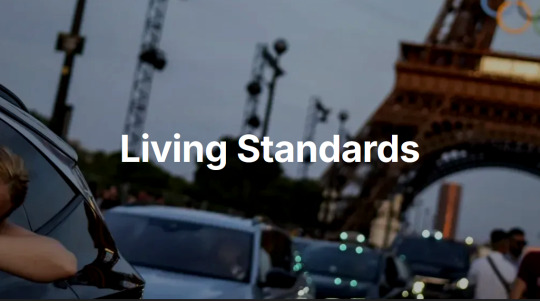
39. Millions more children got an education
Staggering statistics incoming: between 2000 and 2023, the number of children and adolescents not attending school fell by nearly 40%, and Eastern and Southern Africa, achieved gender parity in primary education, with 25 million more girls are enrolled in primary school today than in the early 2000s. Since 2015, an additional 110 million children have entered school worldwide, and 40 million more young people are completing secondary school.
40. We fed around a quarter of the world's kids at school
Around 480 million students are now getting fed at school, up from 319 million before the pandemic, and 104 countries have joined a global coalition to promote school meals, School feeding policies are now in place in 48 countries in Africa, and this year Nigeria announced plans to expand school meals to 20 million children by 2025, Kenya committed to expanding its program from two million to ten million children by the end of the decade, and Indonesia pledged to provide lunches to all 78 million of its students, in what will be the world's largest free school meals program.

50. Solar installations shattered all records
Global solar installations look set to reach an unprecedented 660GW in 2024, up 50% from 2023's previous record. The pace of deployment has become almost unfathomable - in 2010, it took a month to install a gigawatt, by 2016, a week, and in 2024, just 12 hours. Solar has become not just the cheapest form of new electricity in history, but the fastest-growing energy technology ever deployed, and the International Energy Agency said that the pace of deployment is now ahead of the trajectory required for net zero by 2050.
51. Battery storage transformed the economics of renewables
Global battery storage capacity surged 76% in 2024, making investments in solar and wind energy much more attractive, and vice-versa. As with solar, the pace of change stunned even the most cynical observers. Price wars between the big Chinese manufacturers pushed battery costs to record lows, and global battery manufacturing capacity increased by 42%, setting the stage for future growth in both grid storage and electric vehicles - crucial for the clean flexibility required by a renewables-dominated electricity system. The world's first large-scale grid battery installation only went online seven years ago; by next year, global battery storage capacity will exceed that of pumped hydro.
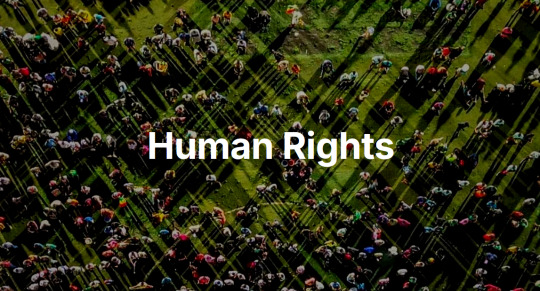
65. Democracy proved remarkably resilient in a record year of elections
More than two billion people went to the polls this year, and democracy fared far better than most people expected, with solid voter turnout, limited election manipulation, and evidence of incumbent governments being tamed. It wasn't all good news, but Indonesia saw the world's biggest one day election, Indian voters rejected authoritarianism, South Korea's democratic institutions did the same, Bangladesh promised free and fair elections following a 'people's victory', Senegal, Sri Lanka and Botswana saw peaceful transfers of power to new leaders after decades of single party rule, and Syria saw the end of one of the world's most horrific authoritarian regimes.
66. Global leaders committed to ending violence against children
In early November, while the eyes of the world were on the US election, an event took place that may prove to be a far more consequential for humanity. Five countries pledged to end corporal punishment in all settings, two more pledged to end it in schools, and another 12, including Bangladesh and Nigeria, accepted recommendations earlier in the year to end corporal punishment of children in all settings. In total, in 2024 more than 100 countries made some kind of commitment to ending violence against children. Together, these countries are home to hundreds of millions of children, with the WHO calling the move a 'fundamental shift.'

73. Space exploration hit new milestones
NASA’s Europa Clipper began a 2.9 billion kilometre voyage to Jupiter to investigate a moon that may have conditions for life; astronomers identified an ice world with a possible atmosphere in the habitable zone; and the James Webb Telescope found the farthest known galaxy. Closer to Earth, China landed on the far side of the moon, the Polaris Dawn crew made a historic trip to orbit, and Starship moved closer to operational use – and maybe one day, to travel to Mars.
74. Next-generation materials advanced
A mind-boggling year for material science. Artificial intelligence helped identify a solid-state electrolyte that could slash lithium use in batteries by 70%, and an Apple supplier announced a battery material that can deliver around 100 times better energy density. Researchers created an insulating synthetic sapphire material 1.25 nanometers thick, plus the world’s thinnest lens, just three atoms across. The world’s first functioning graphene-based semiconductor was unveiled (the long-awaited ‘wonder material’ may finally be coming of age!) and a team at Berkeley invented a fluffy yellow powder that could be a game changer for removing carbon from the atmosphere.
-via Fix The News, December 19, 2024
#renumbered this to reflect the article numbering#and highlight just how many stories of hope there are#and how many successes each labeled story contains#2024#good news#hope#hope posting#hopeposting#hopepunk#conservation#sustainability#public health#energy#quality of life#human rights#science and technology
3K notes
·
View notes
Text
Some resources for Congo

On the ground efforts in the DRC to support:
‼️indicates campaigns that are low on funds and/or stagnating. last progress update was done one Dec 5th
Focus Congo
Friends of the Congo
Action Kivu
Iheartafricadotorg
City of Joy women's community
Panzi Foundation
The Ntibonera Foundation
Save the Children
Humanitarian support for displaced civilians in the DRC
Konzo
Voluntaryism In Action - Community gardens in the DRC
Malaika
Education for Congo’s Children: 30 Days, 30 Hopes ($2,946 /$30,000 - VERY low on funds)‼️
Emmanuel's Peace African Hope Organization *donations have been paused. I have reached out to see if another campaign will be opened and will update when I hear back
The Humanitarian Crisis in Congo will not go unheard (£4,435/£10,000)‼️
Agissons Ensemble ($17,339/$20,000)‼️
Goma Upendo ($22,850/$50,000 CAD)‼️
Goma Actif (€67,690/€75,000)
Support displaced women in eastern DRC, organized by the Congolicious Foundation (€12,896/€50,000)‼️
Medical and sanitary supplies to support women & children in Congo, Nigeria, and Sudan ($35/$3,000 CAD) ‼️
Give2Goma ($67,814/$100,000)‼️
Together for Congo (€4,418/€18,000 - VERY low on funds) ‼️
Nurses For Humanity *gfm terminated their campaign, please donate through paypal at @/juicebaeco ‼️
BEL AV ($3,501 /$30,000)‼️
Support Congolese Refugees: Help Us Bring Hope to Refugees ($21,278/$100,000 CAD - VERY low on funds)‼️
Relief for displaced civilians in the DRC (€7,838/€20,000)‼️ *the funds from this campaign will help ship clothes and shoes to deliver to displacement camps
Mutual Aim: All Safe Hands on Deck ($28,371/$220,000 - VERY low on funds)‼️
Congolese families that need your support:
The Busimba Family ($16,245/$30,000)‼️
Leon's Family ($1,552/$25,000 - VERY low on funds)‼️
Amina'a Family ($1,256/$5,000 - VERY low on funds)‼️
Help Mugisha come to Columbia ($2,500/$2,500) Mugisha has made it to Columbia and has been reunited with his uncle!
Landry's Family - founder of Agissons Ensembles ($395/$10,000 - VERY low on funds)‼️
Help Marcelline and her son evacuate ($1,229/$2,000)‼️
Additional resources
Send a Letter to U.S. Lawmakers to demand that Your Tax Dollars Stop Funding Conflict in the Congo
Amnesty International report on cobalt mining in the DRC
Amnesty International report on human rights abuses in the DRC
Understanding the Congolese Crisis: A Starting Guide by @/baobaboperation on ig
Info, updates, and resources on Congo and Sudan by @/red_maat on ig
Who is funding the violence in the Congo? by @/voluntaryisminaction on ig
Accounts to Follow
links lead to instagram profiles, but I have also listed the other places they have a social media presence (that I'm aware of)
Focus Congo - on twitter, ig, and tiktok
Pappy Orion - on twitter, ig, and tiktok
Friends of the Congo - on ig
Baobab Operation - on ig
Team Congo - on twitter and ig
therealntumba - on twitter, ig, and tiktok
landry0204 - on ig and tiktok
Belavinfos - on ig
red_maat - on ig (her link tree for additional resources)
voluntaryisminaction - twitter and ig
genocost - on ig and twitter
iheartafricadotorg - on ig
#Democratic Republic of the Congo#drc#dr congo#Congo is bleeding#free congo#congo genocide#goma#m23 rebels#queued
253 notes
·
View notes
Text
The Igbo people (English: /ˈiːboʊ/ EE-boh,US also /ˈɪɡboʊ/ IG-boh; also spelled Ibo and historically also Iboe, Ebo, Eboe,Eboans,Heebo;natively Ṇ́dị́ Ìgbò) are an ethnic group in Nigeria. They are primarily found in Abia, Anambra, Ebonyi, Enugu, and Imo States. A sizable Igbo population is also found in Delta and Rivers States. Ethnic Igbo populations are found in Cameroon,Gabon, and Equatorial Guinea, as migrants as well as outside Africa. There has been much speculation about the origins of the Igbo people, which are largely unknown.Geographically, the Igbo homeland is divided into two unequal sections by the Niger River—an eastern (which is the larger of the two) and a western section.The Igbo people are one of the largest ethnic groups in Africa.

#african#afrakan#kemetic dreams#africans#brownskin#brown skin#afrakans#african culture#afrakan spirituality#Igbos#igbo culture#igboland#alaigbo#igbo#epic video
463 notes
·
View notes
Text
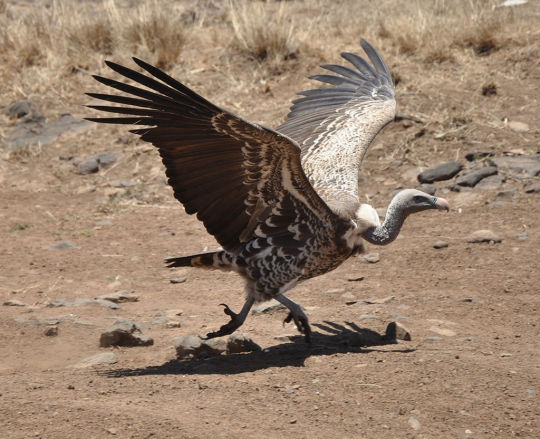
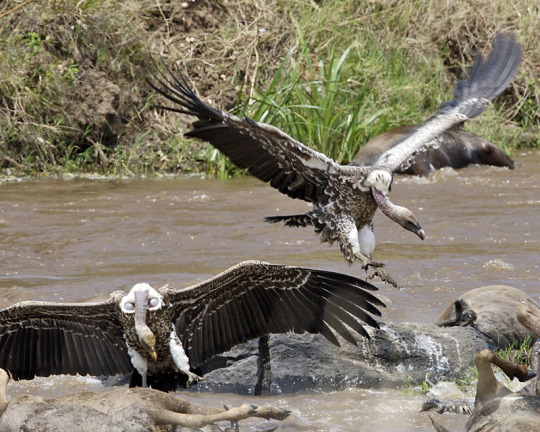
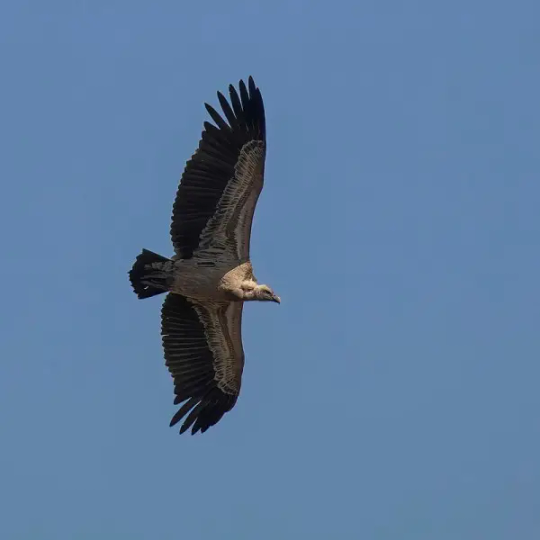

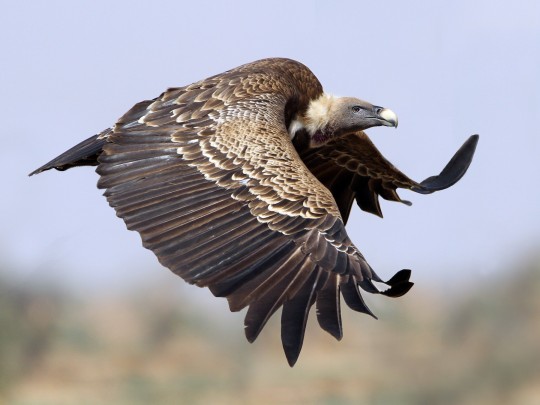

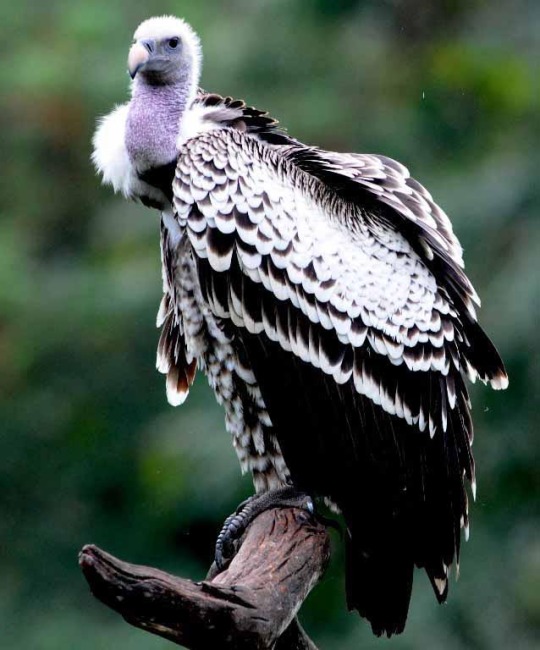
Rüppell's vulture also called Rüppell's griffon vulture, named after Eduard Rüppell, is a large bird of prey in the genus Gyps which is native throughout the sahel and eastern Africa including the countries of Algeria, Benin, Burkina Faso, Burundi, Cameroon, the Central African Republic, Chad, The Ivory Coast, Djibouti, Eritrea, Ethiopia, Gambia, Ghana, Guinea, Guinea-Bissau, Kenya, Mali, Mauritania, Niger, Nigeria, Rwanda, Senegal, Somalia, South Sudan, Sudan, Tanzania, Togo, and Uganda. Here they tend to inhabit grasslands, mountains, and open woodland. Rüppell's vultures are diurnal and very social birds, roosting, nesting, and feeding in large flocks. They spend much of their time flying at great altitudes, using strong winds and thermals to efficiently soar they are known to regular cruise at upwards of 20,000ft (6,000m) above the ground with some known to go as high as 37,000ft (11,300m) making them the highest flying bird. These vultures locate food by sight only, and often follow herds of animals. Once they find a carcass they swoop down, land a little way off, then bound forward with wings spread and their long neck outstretched. Even amongst old world vultures, Rüppell's vultures are specialized feeders with a spiked tongue and strong beak they can strip flesh with ease, and feed upon pelts, hides, and even the bones themselves. Reaching around 33 to 41in (85 -103cms) long, 14 – 20lbs in weight, with a 7.5-8.6ft (2.26 -2.6m) wingspan. They are one of the largest vultures in Africa, both sexes sport mottled brown or black feathering overall with a whitish-brown underbelly and thin, dirty-white fluff covering the head and neck. The base of the neck has a white collar, the eye is yellow or amber, the crop patch deep brown. The head does not have feathers. This species of vulture is considered to be monogamous, forming lifelong breeding pairs. They nest on cliffs in colonies up to a 1,000 strong. After courtship a pair will work together to build a nest using sticks, grass, and leaves that they have gathered or stolen from other nests, here the mother will lay 1 egg. Both parents share in incubation of their egg over a period of 55 days. Once the chick hatches, both parents will feed and tend to it for about 150 days when it fledges. Young remain dependent on their parents after fledging, not reaching independence until the next breeding season. Under ideal conditions a ruppells vulture may live up to 50 years.
#pleistocene#pleistocene pride#pliestocene pride#pliestocene#bird#dinosaur#vulture#ruppells vulture#africa#asia#europe#eurasia#flying#griffon#griffin#griffon vulture
448 notes
·
View notes
Text
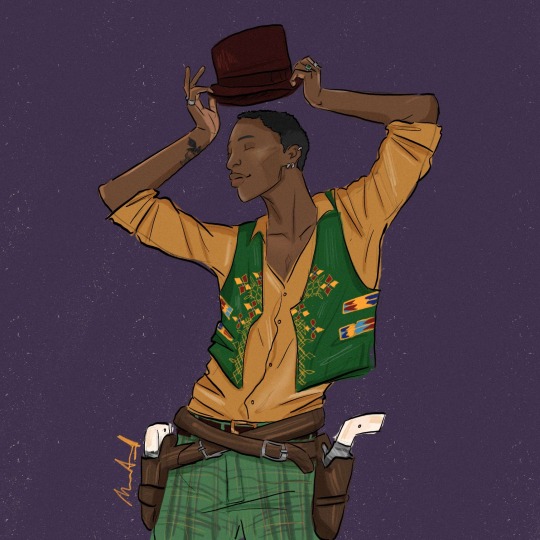
"as if every step was poured from a bottle with a narrow neck" and then that bottle was used for a Molotov cocktail. DONATE TO GAZA and you can request I draw you whatever you want like this
My favorite character for @gvartistsforpalestine , this time I took the excuse to experiment with character design and do an older book!Jesper design for a lil barrel flash. I LOVED the costume design of the show but it was definitely more Barrel than Flash. I also wanted to rectify the fanart and show issue of only showing him in Kerch and Wandering Isle inspired patterns. He lived in Novyi Zem until 15! and I picture him returning to learn from other zowa. When I read the books I thought NZ was based on Ethiopia due to the Eastern Orthodox themes, so his vest here is inspired by habesha designs. The show appeared to draw inspiration from Nigeria which was also awesome. Will I be doing a whole Barrel Flash series of his clothes using Scottish, Irish, show (Kerch and NZ), and Ethiopian designs? Yes.
#jesper fahey fanart#jesper fahey#art#illustration#procreate#shadow and bone#grishaverse#six of crows#doodle#my art#my doodles#grishaverse fanart#shadow and bone season 3#save shadow and bone#six of crows spinoff#crooked kingdom#weeper#barrel flash#habesha#novyi zem#habesha insoired#Irish inspired#Spotify
89 notes
·
View notes
Text
Places I want Worlds of In Game
Alaska
Louisiana
NYC
France
More Eastern European Countries
Moscow
Cairo
South Africa
Nigeria
Myanmar or Laos
Australia
New Zealand
What am I missing?
Washington Worlds (The state): Granite Falls, Copperdale, Glimmerbrook, Evergreen Harbor, Moonwood Mill. That's five!
#ts4#sims 4#simblr#the sims 4#ts4 worlds#sims 4 worlds#please EA I'm begging you#we have like five Washington state worlds
21 notes
·
View notes
Text
team present propaganda
from someone who loves anthropology!
The present doesn’t mean we will stay here. There are new worlds Nintendo can make
To add to point one. There are several cultures that would do well in the splatoon world. Polynesian cultures, African cultures, southern European, Caucasus, middle eastern etc. imagine exploring a world inspired by the cultures found in Nigeria or listening to music inspired by Arabic pop and traditional music
i would love if it was akin to gen 5 Pokémon. More of a soft reboot with new characters, maps, and even some new weapon kits.
More subcultures can be explored, you can also say the same thing with team past with 80s goth and punk.
im just a sucker for world building and seeing how more cultures survived. The idea of a future inkopolis and splatlands sounds cool. I can’t lie. But NINTENDO! DROP AN IDOL GROUP BASED ON WEST AFRICAN CULTURES! AND MY LIFE IS YOURS
42 notes
·
View notes
Text
A very sharp standard low budget cheap affordable income one bedroom house apartment for rent very neat and cool houses available now as pay and parking immediately all major components in this house is working located at rumuekini new layout in port Harcourt city rivers state Nigeria.
#lagos#abuja#vietnam#wike#bangladesh#nigeria#rivers state#nysc#youtube#portharcourt#russia#belarus#iran#eastern europe#ukraine#war#Muslim Muslim#Armoni Capel
1 note
·
View note
Text
✧༺┆✦The Matriarchal Societies✦┆༻✩

Matriarchal societies, where women occupy primary power roles in political, social, and economic realms, have existed across various cultures and historical periods. Distinguished by matrilineal descent, communal decision-making, and significant female authority, these societies present alternative models of social organization.
Characteristics of Matriarchal Societies
Matrilineal Descent
A hallmark of matriarchal societies is matrilineal descent. Family lineage, property, and titles are inherited through the mother’s line, ensuring continuity and stability as women control familial and economic resources. Matriarchs play central roles in family organization, often making key decisions about marriage, property distribution, and household management.
Political Authority
Women in matriarchal societies frequently hold significant political positions such as chiefs, queen mothers, or council leaders. Their leadership is active and involves governance and decision-making. Community councils, typically composed of elder women, guide community policies and resolve disputes, ensuring that women's perspectives are central to governance.
Economic Control
Women typically control property and land, managing and passing them down to their daughters. This economic power underpins their social authority and community status. They oversee the allocation of resources within the community, ensuring equitable distribution and the well-being of all members.
Cultural and Spiritual Roles
Women often serve as spiritual leaders, shamans, or priestesses, conducting important rituals and ceremonies. As custodians of spiritual knowledge and cultural traditions, women preserve and transmit cultural heritage through storytelling, education, and ritual practices, maintaining the community's identity and values.
Historical and Contemporary Examples
The Hopi (Native Americans)
The Hopi people, residing in north-eastern Arizona, follow a matrilineal system where clan membership and inheritance pass through the female line. Women own the land and homes, and they play significant roles in agricultural activities. Female elders influence decision-making processes, particularly regarding community welfare and cultural traditions.
The Ashanti (West Africa)
The Ashanti people of Ghana practice a matrilineal system in which lineage and inheritance pass through the mother's line. The Queen Mother holds significant political influence, including the authority to select the Asantehene (king). Women are key figures in trade and local markets, controlling the distribution of goods and resources.
The Baganda (Uganda)
In Buganda, a kingdom within Uganda, women hold crucial roles in the matrilineal descent system. The Namasole (queen mother) has substantial political influence and advises the Kabaka (king). Women manage household economies, control land inheritance, and are active in agricultural production, ensuring the community's sustenance.
The Mosuo (China)
Located near Lugu Lake in the Yunnan and Sichuan provinces, the Mosuo people practice a unique form of matrilineal descent. Extended families live in large households managed by the matriarch. The Mosuo have "walking marriages," where men visit their partners at night and return to their maternal homes in the morning. Children remain with their mothers, and maternal uncles play significant roles in their upbringing. Women control the household economy, manage agricultural activities, and are involved in local trade and tourism.
The Khasi (India)
The Khasi people of Meghalaya in north-eastern India follow a matrilineal system where property and family names are inherited through the female line. The youngest daughter, known as the "Ka Khadduh," inherits the ancestral property and is responsible for taking care of the elderly parents. Khasi women play central roles in household management, local commerce, and cultural rituals.
The Igbo (Nigeria)
Among the Igbo people of Nigeria, certain communities practice matrilineal descent, particularly in the inheritance of property and titles. Women are influential in trade and local markets, actively participating in community decision-making processes. Female-led organizations and associations play crucial roles in maintaining social order and cultural traditions.
The Minangkabau (Indonesia)
The Minangkabau, located in West Sumatra, are the world's largest matrilineal society. Property and family names are inherited through women. Women manage the household and family inheritance, while men handle external political relations. The role of "Bundo Kanduang" (the revered mother) symbolizes female authority and wisdom. Women play central roles in cultural ceremonies, such as weddings and funerals, reinforcing their social status and authority.
The Tuareg (Sahara Desert)
The Tuareg people, living in the Sahara Desert across Mali, Niger, Algeria, and Libya, practice matrilineal descent. Property and family tents are inherited through the female line. Women have significant autonomy and can initiate divorce. They control family wealth and manage household affairs. Women are custodians of the family's history and traditions, passing down cultural knowledge through oral traditions and music.
The Trobriand Islanders (Papua New Guinea)
The Trobriand Islanders of Papua New Guinea follow a matrilineal system where lineage and inheritance are passed through the mother’s line. Women control the distribution of yam, a staple crop that signifies wealth and social status. Female leaders, known as "dauk," play essential roles in community decision-making and cultural rituals.
The Iroquois Confederacy (North America)
The Haudenosaunee (Iroquois) society, located in the north-eastern United States, is matrilineal, with clans led by elder women known as Clan Mothers. Clan Mothers have the authority to nominate and depose male leaders (sachems). They play a vital role in maintaining the Great Law of Peace, which governs the confederacy. Women are central to agricultural practices, growing the "Three Sisters" crops (corn, beans, and squash), which are crucial to the community's sustenance.
Modern Implications and Interpretations
Matriarchal societies offer models of gender equality and demonstrate that societies can thrive with women in central roles. These societies challenge the notion that patriarchal structures are necessary for social stability. The emphasis on matrilineal descent and female authority helps preserve cultural traditions, ensuring the continuity of community identity. Women's control over resources often leads to more sustainable and equitable economic practices, benefiting the community as a whole.
Challenges and Misconceptions
Common misconceptions suggest that matriarchal societies simply reverse the power dynamics of patriarchy, with women dominating men. However, these societies often emphasize balance, cooperation, and mutual respect between genders. Patriarchal societies may resist the idea of matriarchy, viewing it as a threat to established power structures, leading to the marginalization and misrepresentation of matriarchal communities.
Matriarchal societies provide valuable insights into alternative social structures where women hold central roles in political, social, and economic spheres. These societies demonstrate the viability of matrilineal and matriarchal systems, offering models for more balanced and equitable gender dynamics. Understanding these societies broadens perspectives on power distribution, gender roles, and cultural practices, challenging the dominance of patriarchal paradigms in historical and contemporary contexts. They highlight the potential for diverse forms of social organization that prioritize cooperation, sustainability, and equality.

26 notes
·
View notes
